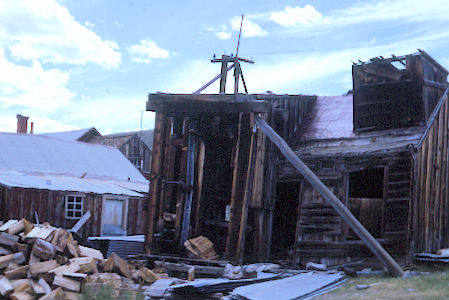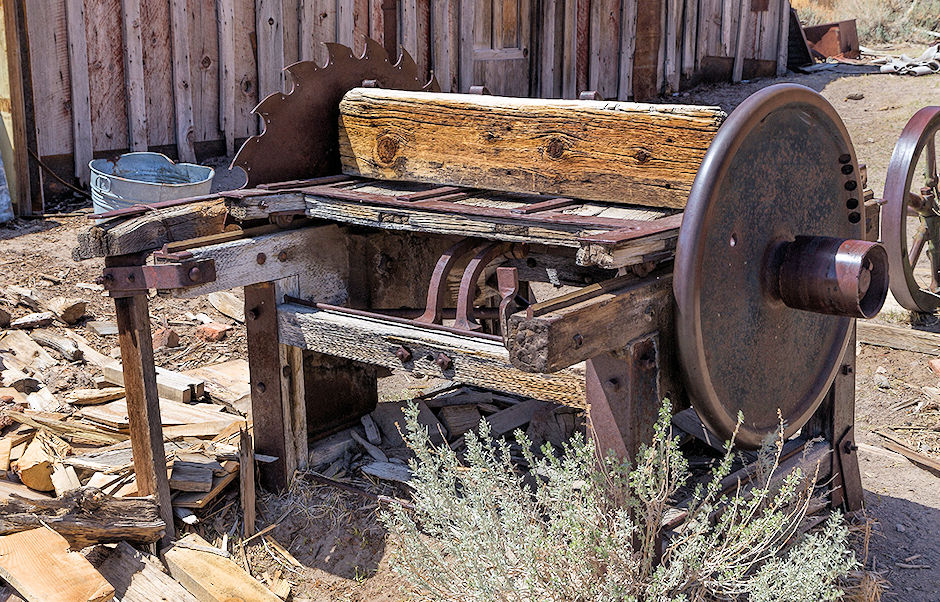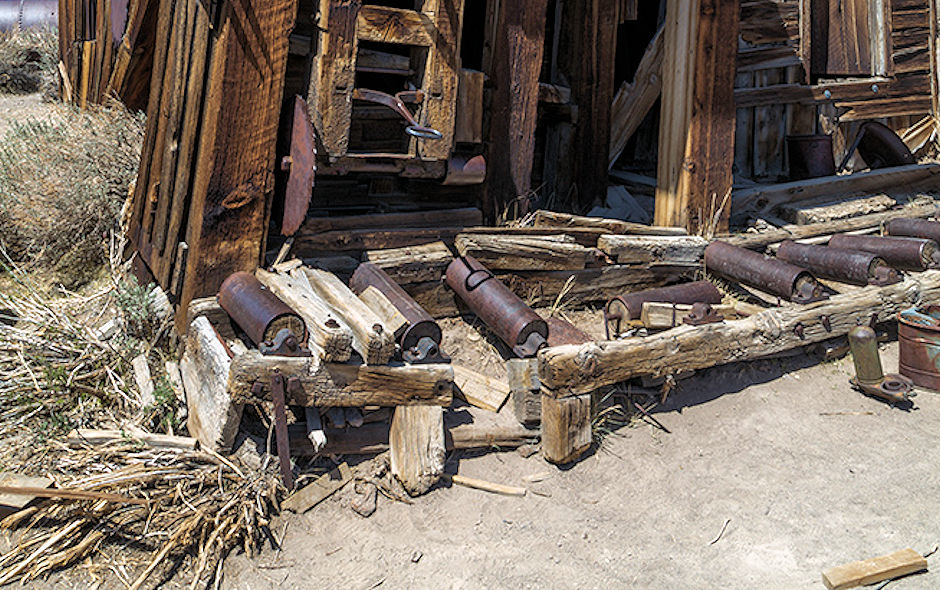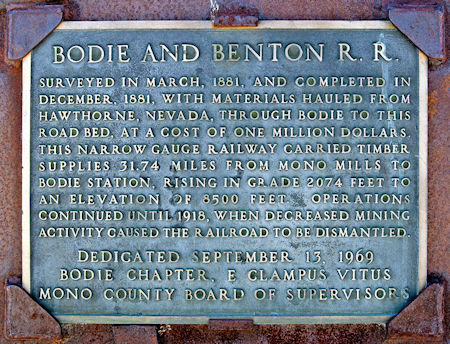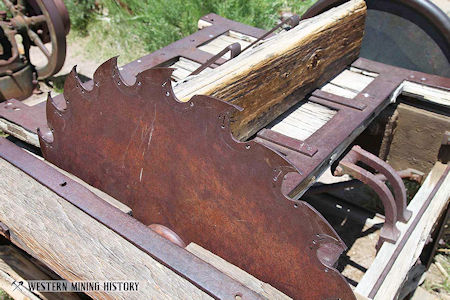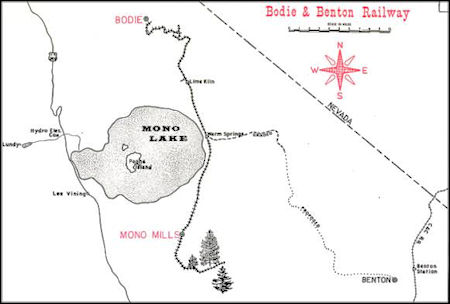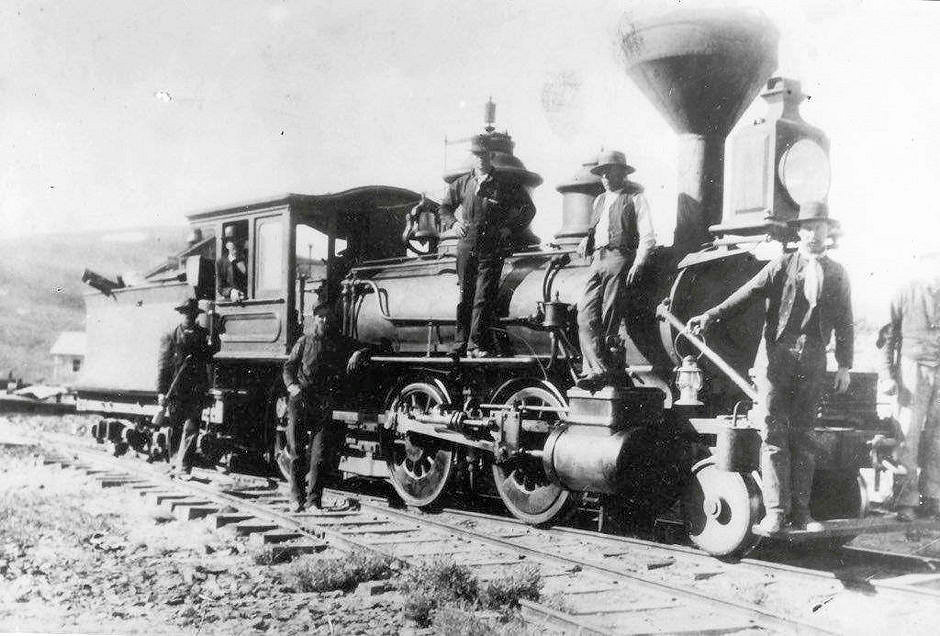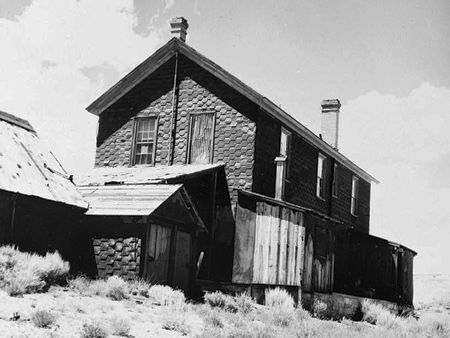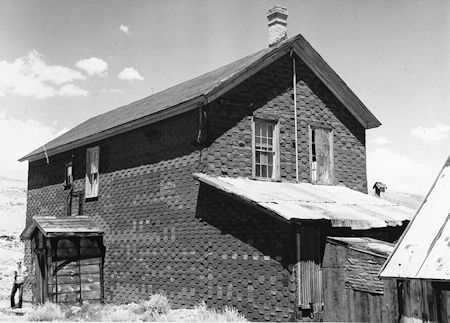Bodie’s need for lumber to build homes, timber for shoring mines, and wood for fuel was tremendous. During the heyday, over 300 cords of wood A DAY went up in smoke. With no wood in sight of town, the wood hauling business was an exceptional commodity. As the town grew in the late 1870s, wood was brought by wagons from lumber mills in Bridgeport, the Mono Basin and other locations to build structures, keep the ever-growing population warm in winter and to supply the mining district.
Teamsters could not begin to meet the enormous appetite Bodie had for consuming wood. The stage was set for the obvious answer to the problem - build a railroad to the large timber stands south of Mono Lake. The paradox to this picture is the forests of Jeffrey and lodgepole pine a few miles south of Mono Lake.
It is surprising that this country could bear trees, and incredible that they would mature to four feet in diameter. However, the country does, and the trees did, and therein lies the birth of a railroad. As early as the 1860s, men recognized the potential of the vast Jeffery pine forest located over 30 miles south of Bodie, near Mono Lake. The land was acquired in the 1880s by businessmen who filed timber rights on 12,000 acres.
There was a small sawmill in Bodie that was used to break down scrap wood that was brought in by rail for firewood. The trains also brought in sawmill scraps and poor quality lumber from elsewhere in the high Sierra since Bodie had no local trees to burn for heat.
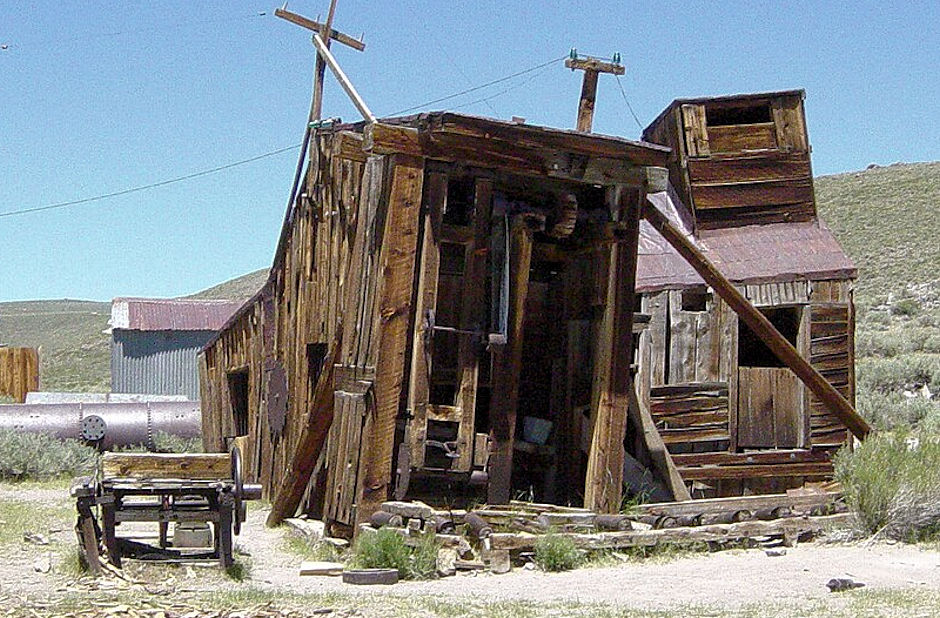
Remains of sawmill in Bodie - remains of Sled Saw on the left and Cross-cut Saw in front
This sawmill consisted of a pair of power saws - one a sled based table saw and the other a type of cross cut saw for larger wood.
The whole top table slides on a pair of metal rails with the slab of wood on the top to support the wood being run past the spinning blade. You can see the flywheel of the motor about 10' behind the saw. The flywheel on the saw itself limited the length of the piece of lumber that could be run past the blade.
The second saw was built for cross cuts. In this case the saw blade was on a swing arm hinged at the top with a handle for pulling the saw arm towards the operator just to the right of the blade. There was a tension mechanism in the middle of the swing arm assembly that would allow the operator to engage/disengage the belt driving the saw blade.
The Bodie Wood and Lumber Company was organized by H. M. Yerington, J. W. Haynie and others to acquire timber lands and water rights in Mono County, California, just south of Mono Lake. On February 18, 1881, the same group organized the Bodie Railway and Lumber Co. narrow gauge railway to carry freight between Bodie and the timber area. Shortly afterwards, J. T. Oliver surveyed the 31.7 mile route from Bodie to the Mono Mills site five miles south of Mono Lake.
While the sawmill at Mono Mills was being built, grading for the roadbed was started at the top of Bodie Bluff on May 25, 1881. With the aid of two switchbacks, many cuts, and a 260-foot trestle, the steep and circuitous grade down to lake elevation was accomplished, and by mid-July, the first 20 miles of roadbed had been graded. By November 1881 track was laid and a two-car lumber train arrived at Bodie. Superintendent Thomas Holt greeted the train crew and had a turkey dinner ready for them. The started at the sawmill at Mono Mills and ended above the Bodie railway office, close to the Standard Mine.
The following weeks saw the new railway quite active with a scheduled train leaving Bodie each day at 6:30 A.M. and arriving at Mono Mills at 10:00 A.M. The train departed the mill at 2 o’clock each afternoon, and arrived back at Bodie by 6:00 P.M. The ten - to twelve-car train was broken up into three sections prior to the final approach to Bodie in order to negotiate the switchbacks and 3.8% grades.
The massive sawmill, known as Mono Mills, stood at the southern terminus and produced 80,000 feet of lumber every 10 hours. The Bodie Railway consisted of 4 steam locomotives, 30 flatcars, a tank car, 5 logging cars, 2 pole cars and a caboose. The company employed 25 Mill Workers and over 200 Loggers. It operated until 1917.
In addition to the problems caused by the sharp turns and steep grades, the rolling stock was not equipped with air rakes. Two brakemen were kept busy hopping from car to car setting the hand brakes whenever the train began to gain momentum. There were many derailments, but no fatalities among the crewmen were ever recorded.
The greatest portion of Mono Mills output was in cordwood. This relatively poor quality of wood was used as fuel to produce steam power for the hoists and stamp mills at the Bodie mines. This demand kept the flat cars loaded to capacity and helped offset the low yield of only 8,000 board feet per acre for construction lumber. The “last run” of the first season was made on January 7, 1882, after which the railroad closed down for the winter. During the winter it was decided to expand the rail line to Benton and the company name changed to Bodie & Benton Railway & Commercial Co. Construction of the Benton extension was started but never finished.
Electricity arrived at Bodie and the railroad continued to operate. Charles Knox of Tonopah, Nevada, and Jim Cain of Bodie, formed a syndicate to purchase the railroad in 1906. This time the railway was doing business under the name of The Mono Lake Railway & Lumber Co. The new company acquired additional timber lands, bringing their holdings to 23,000 acres. The stockholders expected to do a flourishing business as contracts for large quantities of wood and lumber were already signed.

The Mono on its way to Bodie with a load of wood makes an inspection stop at Warm Springs in 1907.
The flat car had a hauling capacity of eight cords of wood. Photo Emil William Billeb Photo Collection/Nevada Historical Association
Mining activity in Bodie suffered a steady decline after 1912. The granddaddy of them all, the Standard Mine, closed down in 1914 after contributing to an estimated 90 million dollars in gold extracted from the district. By 1916, the population of Bodie had decreased to 200, and it was becoming apparent that the town was soon to join the ever-increasing list of “ghost towns.” The story of Bodie’s narrow gauge to nowhere came to an end in 1917, when the railroad was sold for scrap. Emil Billeb, the railroad company’s last man in charge from 1908 to the end, was awarded the contract to take up the rail and sell it. At its death, the railroad had measured about 38 miles, counting all sidings, and spurs into the woods. Gus Hess, who had served as master mechanic on the railroad for many years, was in charge of the dismantling crews.
Work of dismantling started at the Bodie end of the line in late July 1918. Rails were sent down to Mono Mills to be stacked, loaded on trucks, and shipped out to Benton Station on the Southern Pacific (ex-Carson & Colorado) narrow gauge. By September, all the rail was stripped off the ground, leaving a string of rotting ties to mark the route of a once proud and hopeful little railroad. There were 2300 tons of rail and scrap iron left from cut up rolling stock and locomotives ready to be shipped out of Mono Mills.
On a hill overlooking this relic of California’s bonanza era, stands the old railroad depot, a weathered marker for this chapter in the fabulous history of narrow gauge railroads. For more details on the Bodie Railway and Lumber Co. read this and this.
